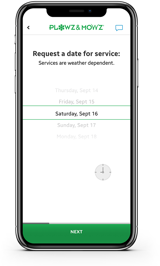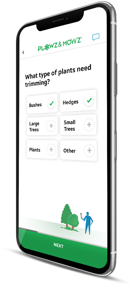How To Nurture Seedlings Into Healthy Plants
Plants started from seeds require a bit of mollycoddling… You’re itching to dig in the dirt and see pretty things pop out of the soil, but the ground remains a tundra with no signs of coming warmth. Then it hits you…Instead of paying megabucks for young plants at the garden store in a few months, buy a pack of seeds, save money, and watch your investment mature. Sounds great, and we hope you’re up for it. This potentially fun adventure will test your gardening skills. Start with a small selection of seeds for this first year, and consider choosing seeds considered to be among the easiest to start, such as:
Flowers: marigolds, morning glory, Shasta daisies, sunflowers, and zinnias.
Vegetables: cucumbers, green beans, peas, tomatoes, and zucchini.
Read the back of the seed packet before you purchase—the manufacturer wants your seeds to grow into healthy plants! Look for information like the date the seeds were packaged, the time to start the seeds, how long they will need to germinate when you can move them outside.
Once you’ve chosen your seeds, you can purchase seed-starting kits or begin your seeds in something as simple as plastic cups with holes in the bottom or even last year’s plant containers. However, whatever you choose, be sure you wash them with soap and water and rinse them thoroughly to ensure no potentially harmful organisms are left in the pots. Some experts recommend soaking previously used pots in bleach and rinsing them well before using them—that’s how important it is to ensure no organisms can attack your seeds/seedlings.
Get soil specifically made for starting seeds. Leftover dirt from the outdoor plant containers you tossed into
the shed last fall is a recipe for failure. “Seed-starting soil” is generally a lightweight mix of peat, compost, and
vermiculite, a shiny, flaky looking soil that is well-aerated and holds water well. Place the seed in its pot to a depth about four times its width. Cover with soil. Be sure you mark what type of seed you planted in each pot. It’s easy to forget. Choose a location in your home where the seeds can enjoy white florescent lighting for 12 to 16 hours a day (lights set about three inches above the pots work well). Avoid the temptation to place the pots in sunlight or on windowsills. These locations cause thin-stemmed, weedy-looking plants that curve toward the sunlight instead of growing straight and tall. Note: A few types of seeds germinate best in darkness. Read and keep those seed packets.
Don’t overwater the seeds. A spray bottle will keep the soil moist but not wet. You can also place the containers
in a tray with a little water in the bottom and let the seeds soak up the water they need. Cover the pots with plastic wrap or other clear covers until you see the first bit of green sprouting up. Seeds need the warmth of at least 60° F, and a basement location can work well. If the location is too warm, you may get thin-stemmed plants. When it’s close to time to transplant to the ground, begin by bringing the pots outside for a few hours at a time, returning them to their “home” spot in the evening. It would be best if you acclimated these mollycoddled babies to their new digs before planting them in the ground.
Posted on February 11, 2021
Order landscaping services for your home online, anytime!
Get a Free Online Quote Now
Leave the yard work to the pros this year, you can browse our services and schedule an appoinment online, anytime !

























